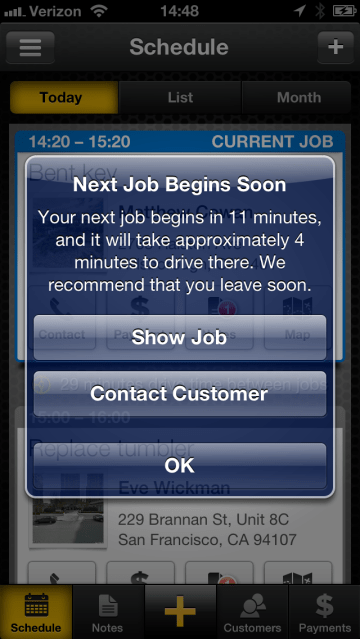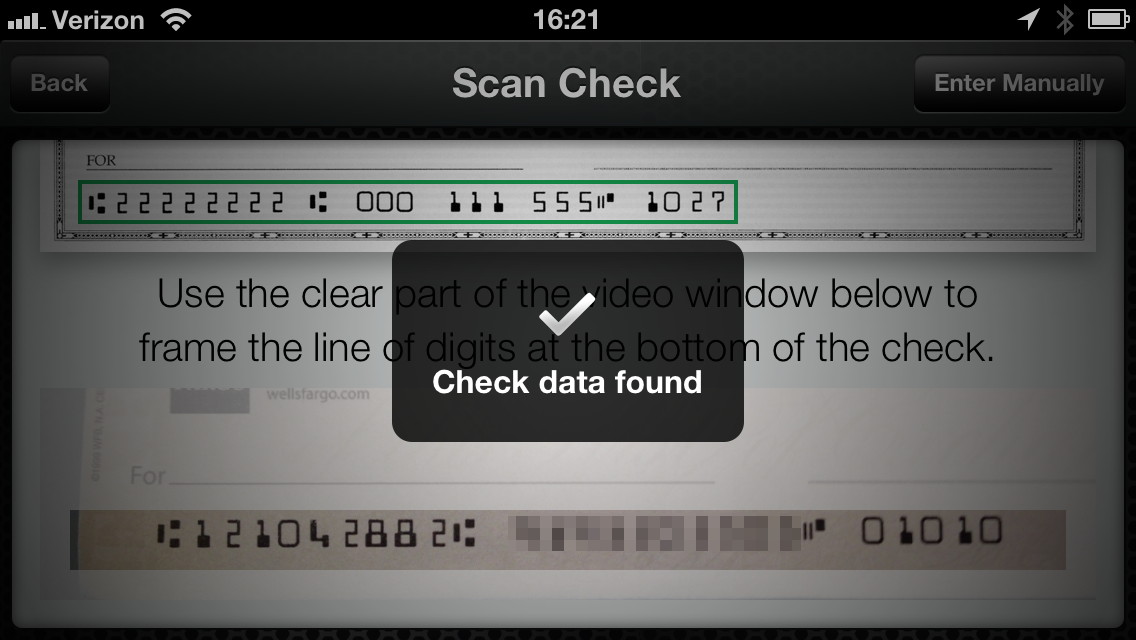Breeze, a new mobile app for iOS that’s launching at TechCrunch Disrupt SF 2013 today, wants to help onsite vendors like plumbers, locksmiths, dog walkers and personal trainers to manage their businesses, take mobile payments and arrive on time.
Onsite service vendors (and especially if they are working as freelancers), Breeze CEO and co-founder Matthew Cowan told me last week, still tend to run their businesses on paper or through a number of unconnected mobile apps. Their business often suffers because they arrive late to appointments, but without easy access to their customer’s contact info they don’t really have an option to alert them.
“In the age of Uber, why should calling a plumber have a so much lower standard?” Cowan asked. Tech has already revolutionized most businesses and even though they aren’t always using it for their businesses, 85% of business owners now have a smartphone in their pockets.
 Breeze then, Cowan argues, solves three of the key issues onsite service vendors face. The first is somewhat unintuitive, but while most of us probably have some experience with a service vendor who didn’t show up on time (or at all), for these businesses, customer no-shows are a major problem. So the first thing the Breeze team worked on was ensuring that vendors could easily manage their appointments and remind customers of them over SMS and email (the service does not offer a consumer-facing app itself).
Breeze then, Cowan argues, solves three of the key issues onsite service vendors face. The first is somewhat unintuitive, but while most of us probably have some experience with a service vendor who didn’t show up on time (or at all), for these businesses, customer no-shows are a major problem. So the first thing the Breeze team worked on was ensuring that vendors could easily manage their appointments and remind customers of them over SMS and email (the service does not offer a consumer-facing app itself).
To ensure that the vendor shows up on time, too, Breeze constantly analyzes traffic conditions in the background and sends out an alert when it’s time to move on from one job to the next (or at least call their customers to let them know things will run a bit late). Breeze also creates a job card for every appointment the user enters into the system that includes contact info and a street view image of the address. The idea here, as Cowan described it, is to have an automated assistant that keeps the business moving smoothly without interfering too much with how things already run.
The second major problem the app aims to solve is taking payments. As Cowan noted, consumers want to use credit cards for everything and most of these businesses want to take anything but credit cards (because of the high fees). Even though most businesses prefer to take checks and get paid right away, Cowan argued, most of them end up in the center console of a truck for at least a few days before they get cashed.
The Breeze team decided to remain agnostic about how businesses get paid, so the app offers them the option to take credit cards, send an invoice by email to get paid later, or to take a check and immediately scan it and cash it (for a significantly smaller fee than the credit card company would take).

As for the third problem, Cowan told me that most onsite service vendors are very bad at following up with their customers to increase the chance of repeat business. By making it easy to capture more contact information from customers and managing future alerts for potential maintenance etc., the service aims to help these vendors capture additional business opportunities in the future.
Breeze’s business model is pretty straightforward. The service charges a $19.99 per month per user and also offers a $39.95 subscription for businesses with up to four users out in the field. In its current form, Breeze works best of companies with fewer than 20 employees and for the time being, Breeze isn’t interested in serving larger companies, which generally have some form of mobile workforce management system in place already.
The company itself has raised $2 million in seed funding from a very prestigious group of investors, including Allen & Company, Charles River Ventures, Marc Benioff, Max Levchin, James Murdoch, Naval Ravikant, Jon Rubinstein, David Sacks, Jeff Skoll and Peter Thiel. Cowan and his co-founder and CTO Adam Block noted that the team handpicked investors who would be able to help it understand the market and grow quickly.
In Cowan’s view, onsite service is one of the “last undiscovered countries – an area that hasn’t been touched by technology.” The one area where these companies do rely on tech, though, is customer acquisition. While some of these online marketplaces and discovery services like Angie’s List may consider getting into Breeze’s business, Cowan thinks they are also natural partners for the company.
Question & Answer From Disrupt Judges
Q: How do you acquire new customers?
A: Breeze will work with trade associations, business development partnerships with discovery services and the core virality of the service.
Q: Is the product available?
A: Breeze is now in private beta.
Q: How do you prevent the customers from having to wait for the repairmant?
A: It’s about the customers geting informed about when the vendor will arrive. “The last notification we do is a geofencened notification when the vendor is about to arrive.” Consumers don’t worry so much about the repairman being late, as about not knowing when they will arrive.
Q: How do you plan to charge for the service?
A: Breeze charges $20 per user per month. The company does not want to charge per job because it does not want to create a disincentive for vendors to put their data into their app.
Disclosure: Eric Eldon’s fiancee’s brother-in-law is the cofounder of Breeze. Eric recused himself from any consideration of its application during the initial round and will continue to avoid any involvement with judging or covering Breeze.


